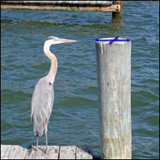
 A boathouse lift is a boat lift that attaches to the roof joists of a boathouse. (If you are looking for a lift that does not attach to the roof of a boathouse, see our 4-piling lifts) A boathouse lift uses a hoist, cables, and pulleys to lift a boat. The boat hoist turns a pipe on which the cable is wound and the cable extends to the sides of the boathouse, travels down via pulleys, and then attaches to either slings or a cradle.
A boathouse lift is a boat lift that attaches to the roof joists of a boathouse. (If you are looking for a lift that does not attach to the roof of a boathouse, see our 4-piling lifts) A boathouse lift uses a hoist, cables, and pulleys to lift a boat. The boat hoist turns a pipe on which the cable is wound and the cable extends to the sides of the boathouse, travels down via pulleys, and then attaches to either slings or a cradle.
Boathouse Construction
Most boathouses are constructed of wood although some may be made with steel. They are designed with roofs to protect boats from the weather and may or may not have sides that extend down to the deck below.
A boathouse lift attaches to the roof joists of a boathouse. Typical installations require three joists for mounting. One joist is dedicated to the boat hoist, or the gear and motor unit which turns the pipe. The other two joists support the pipe and the pulleys that carry the cable down to the boat.
Most boathouses are constructed of wood. For added strength, these boathouses usually double up the joists that will be carrying the load of the boat. The mounting brackets are through-bolted to the roof joists.
Some boathouses are built with steel. If the joists are boxed steel beams then the typical installation brackets may be used. However, if the joists are steel I-beams they cannot be drilled through for attaching the standard brackets. Special I-beam brackets must be used which will clamp to the I-beam so that no drilling is necessary. Drilling through the side of an I-beam destroys its structural integrity.
Slings and Cradles
Boathouse lifts use either polyester slings for lifting the boat or steel cradles. Slings can be more economical but do require that the boat’s hull has proper reinforcement so that the slings don’t “squeeze” the hull.
A cradle generally provides better support than slings for a boat. A cradle is made up of two steel or aluminum I-beams that have attachment points on the ends for cables. They also include brackets for holding the bunk boards, which are the carpeted wooden boards or optional aluminum bunks that the boat actually rests upon. Boat cradles can be set up for different hull shapes. They can be adjusted for v-hull boats or flat bottom boats. Pontoon brackets are also available which allow a pair of bunk boards on each side of the cradle for both pontoons.
Sling / Cradle Spacing
Setting up the spacing between the slings or cradle beams is important for the proper support of the boat and the proper functioning of the boathouse lift. It is important that the center of gravity of the boat is in the middle between the two slings or cradle beams. The boat’s center of gravity can be obtained from the boat manufacturer. Then calculate the positions of the slings or cradle beams. First, set the rear sling or cradle beam near the rear of the hull, but make sure it clears the motor and is properly supporting the boat. Then calculate the distance from that rear support to the center of gravity of your boat. Since the center of gravity is also the center of your slings or cradle, use that measurement to find the position of the front sling or cradle beam. Make sure the front sling or cradle beam is squarely under the flat part of the hull. If it is too far forward and the hull is starting to slope up then re-adjust the position of your supports. Finally, double-check everything to make sure the center of gravity of the boat is centered on the lift and that the support of the boat’s hull is sufficient.
*NOTE: Always make sure your boat is able to be lifted by slings before using. Some boats are not designed to withstand the pressure from slings and could be damaged, possibly severely, from being lifted by slings!
Hoist
The boat hoist is the electric drive unit that controls the lifting. Boat Lift Warehouse offers several different hoists that work with this type of lift. There is a flat plate hoist that uses an electric motor that is connected by a belt and pulleys to drive a worm reduction.
We also offer a premium Direct Drive Hoist which is a no-maintenance enclosed hoist. Since this hoist is totally enclosed you do not have to grease your hoist, but the best part is you don’t have to worry about the grease dripping on your boat! The boat hoist drives a pipe that is the length of the lift upon which the cable wraps. Hoists range from around 3,000 lbs up to 8,500 lbs capacities when wrapping on a standard-sized pipe. The difference in capacities for the hoists comes from the differences in the materials used and the power rating of the motor.
Installation Styles
The most common boathouse lift installation uses a single pipe lengthwise in the center of the boathouse. Cables extend across in either direction to four pulleys and then down to the sling or cradle. Some lifts may be set up with the pipe all the way on one side of the boathouse. With side pipe lifts, two cables extend across the boathouse to pulleys on the other side while the other two cables go down directly from the pipe. These lifts cannot lift as much weight because of the opposing forces of the cables.
Some boathouse lifts use a two-pipe configuration with separate pipes on each side of the boathouse. This arrangement requires two boat hoists (drives) and allows lifting a lot more weight.
For more information on different configurations of boathouse lifts please refer to our boathouse kit guide.
Compounding
The simplest method for building a boathouse lift that can lift more weight is to use compounding. Compounding is when pulleys are used to lessen the load on the hoist allowing it to lift more weight. The pulleys are attached to the slings or the cradle using a compounding bracket and then the cable is routed back up to the top of the boathouse where it is dead-ended. This cuts the amount of weight being lifted by the hoist in half but it also reduces the speed of the boathouse lift by the same amount. When using compounding to upgrade an existing lift, be sure that the boathouse and the cradle can support the extra load.
On aluminum cradles, the compounding is accomplished by adding a pulley to the extrusion on the end of the cradle. You can add this to your cradle by using our Aluminum Sheave Housing Kit.
Hoist Covers
Flat plate hoists (drives) may be purchased with or without a cover. Since most boathouses already have roofs over them some people prefer not to use a hoist cover. Hoist covers are available that only cover the front of the hoist or that cover both the front, the back, and the large pulley.
Cable Winders
Cable winders are a common upgrade that slides over the pipe and has grooves that allow the cable to wrap neatly upon them. This prevents the cable from rubbing against itself and protects the galvanized surface of the pipe. It will help prolong cable life and will actually increase the speed of the boathouse lift. The trade-off is that the cable winders reduce the lifting capacity of the hoist because they increase the speed of wrapping cable.
Guide Posts
Guide posts can be used with cradles to ensure that the boat is centered between the cables. The guide posts that we provide clamp onto the cradle I-beams and are adjustable. You will need to provide PVC pipe to slide over these brackets that are high enough to be seen and used from the boat.
Wireless Remotes
Wireless remotes are available for our boathouse lifts. It is very convenient to be able to lower the lift when bringing the boat in since the water level may have changed. Some people prefer to send the lift back up as they take their boat out on the water. The remote control box replaces the manual switch and controls the motor. The control box also has manual controls as well. A wireless transmitter is included and additional transmitters are available for purchase. Remotes can be purchased with an automatic stop that has a preset “up position” and a preset “down position” for one-touch operation. Boat Lift Warehouse offers the TEC Remote and the GEM Remote.
It may seem like a lot to consider when building a boathouse boat lift, but Boat Lift Warehouse has put together boathouse lift kits so you have everything you need for an easier install. You don’t want to get halfway through your boathouse lift installation and find out you have forgotten to order a part, so let us help you get everything you need. Order a boathouse lift kit today!
Editor’s Note: This post was originally published in May 2017 and has been updated for accuracy and comprehensiveness.



